Jay Highman, the CEO and president of
Nature’s One, an Ohio company that made the nation’s first organic baby
formula, says he was concerned when a study published in February implicated
his formula as containing arsenic. The problem: organic brown rice syrup, one
of the ingredients.
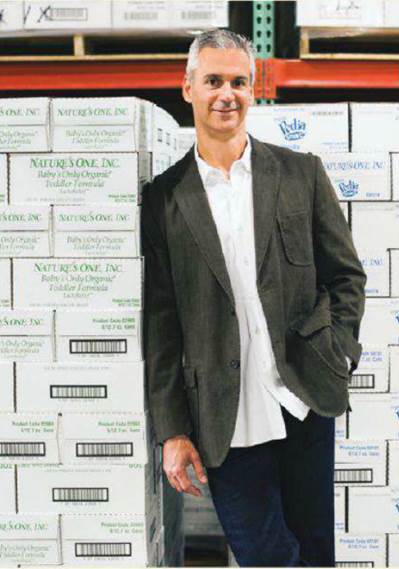
Jay
Highman, the CEO and president of Nature’s One
“We had always been known for having the
highest standards for the cleanest, purest ingredients, and overnight we became
a poster child for arsenic in rice,” Highman says. He resolved that he would
find a way to eliminate arsenic contamination in the rice syrup.
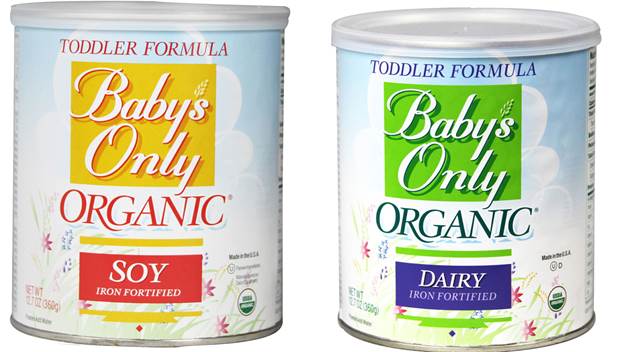
Jay
Highman’s company makes dairy-and soy-based formulas
Highman searched for the purest source for
rice and found that he had to go outside of the U.S to find rice with the
lowest possible arsenic content. He declined to disclose his source for fear
larger companies “will start devouring our supply chain”. He worked with his
syrup supplier to develop a filtration process that would eliminate detectable
levels of arsenic.
By July, he said the combination of more
pristine rice and the new filtration process produced brown rice syrup that met
his goal. We included samples of two Nature’s One dairy formulas and one soy
formula in our tests.
The original powdered samples we tested of
dairy-and soy-based formulas had inorganic arsenic that averaged 40.6 ppb for
dairy and 77.7 ppb for soy.
When we tested the new versions of the two
dairy formulas, the levels were either undetectable or nearly so. The company
says its new formulation has use-by dates of January 2014 (Dairy with DHA &
ARA), July 2015 (Dairy), or later.
Highman says he has been reworking the soy
formula and hopes to produce a product that has lower levels of arsenic. If he
can’t get it lower, Highman says he will create a non-dairy formula without
soy. Meanwhile, an interim soy version we tested did have somewhat lower levels
of arsenic, but it had higher levels of cadmium, another toxin.
How to cut your arsenic risk
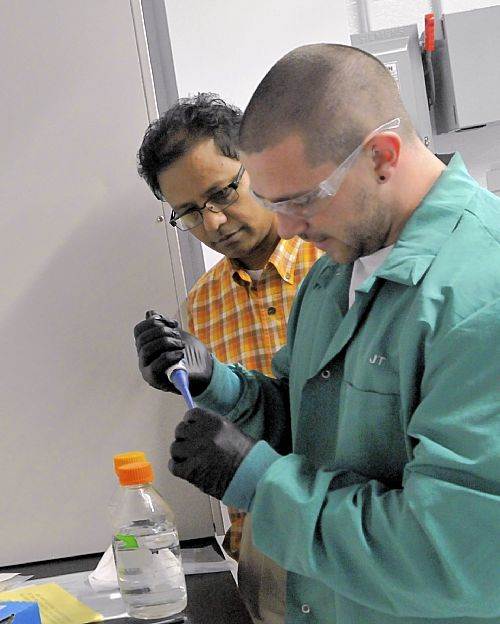
Test
your water
If your home is not on a public water
system, have your water tested for arsenic and lead. To find a certified lab,
contact your local health department or call the federal Safe Drinking Water
Hotline at 800-426-4791
Change
the way you cook rice
You may be able to cut your exposure to
inorganic arsenic in rice by rinsing raw rice thoroughly before cooking, using
a ratio of 6 cups tater to 1 cup rice for cooking and draining the excess after
afterward. That is a traditional method of cooking rice in Asia. The modern
technique of cooking rice in water that is entirely absorbed by the grains has
been promoted because it allows rice to retain more of its vitamins and other
nutrients. But even though you may sacrifice some of rice’s nutritional value,
research has shown that ringing and using more water removes about 30 per cent
if the rice’s inorganic arsenic content.
Eat a
varied diet
Some vegetables can accumulate arsenic when
grown in contaminated soil. To help, clean vegetables thoroughly, especially
potato skins. Some fruit juices such as apple and grape juice are high in
arsenic, as our previous tests showed. To prevent obesity and tooth decay,
pediatricians advise that infants younger than 6 months shouldn’t drink juice;
children up to age 6 should have no more than 4 to 6 ounces a day and older
children no more than 8 to 11 ounces. Like grape juice, wine also can be a
source of exposure, according to data collected in the FDA’s Total Diet Study,
which provides more complete information about arsenic content in a variety of
foods. Go to fda.gov and search for “total diet study analytical results.”
Experiment
with other grains
Vary your grains, especially if you eat
more than two or three serving of rice per week. Though not arsenic-free, wheat
and oats tend to have lower levels than rice. And quinoa, millet, and amaranth
are among other options for those on a gluten-free diet, though they have not
been studied as much.
Arsenic in food
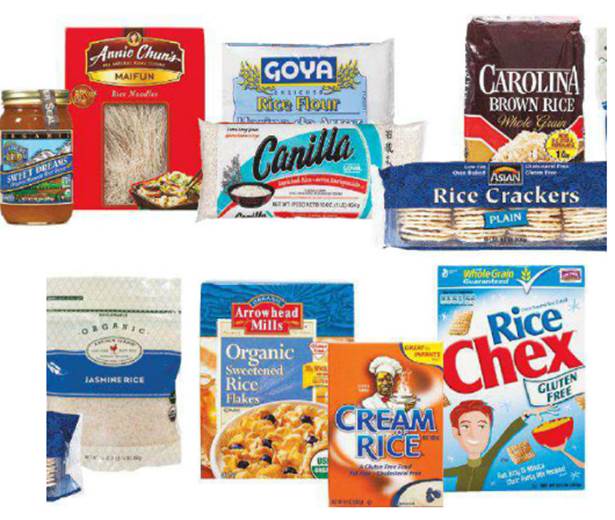
Listed in alphabetical order within
category
 At least one sample exceeded New Jersey drinking water limit (5
micrograms of inorganic arsenic per liter)
At least one sample exceeded New Jersey drinking water limit (5
micrograms of inorganic arsenic per liter)
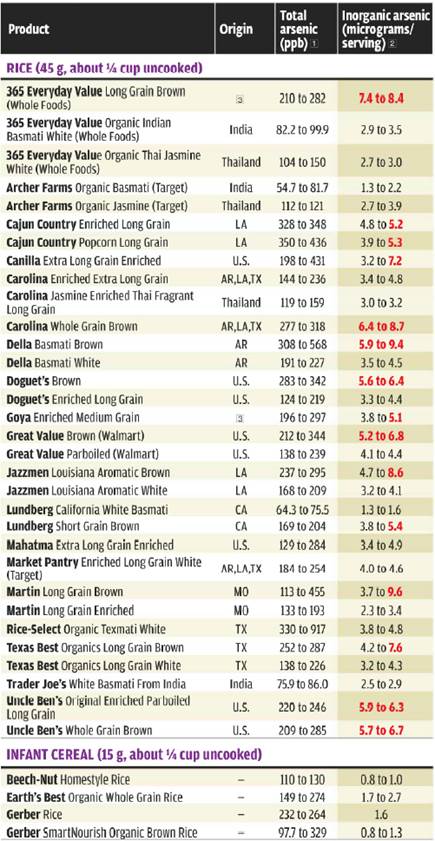

 Includes organic and inorganic arsenic
Includes organic and inorganic arsenic
 The sum of the arsenic species, arsenite, and arsenate
The sum of the arsenic species, arsenite, and arsenate
 Information on rice origin was not provided to us by the
manufacturer.
Information on rice origin was not provided to us by the
manufacturer.
For calculations of inorganic arsenic, all
values reported as less than the reporting limits were applied as 100% of the
reporting limits.
How to read the table
There is no federal limit for arsenic in
most foods, but there is a federal limit of 10 parts per billion for arsenic in
drinking water. The most protective standard in the country is New Jersey’s at
5ppb. At that limit, drinking a liter of water would expose you to 5 micrograms
of inorganic arsenic. That provides a yardstick by which you can compare the
ranges of inorganic arsenic per serving detected in the samples we tested of
the products below. Overall, inorganic arsenic ranged in our samples from 11
percent to 87 percent of the total arsenic we found. The overall average was 55
percent.
Our tests don’t’ offer general conclusions
about overall arsenic levels in any brands or rice product category. We tested
at least three sample of products (many bought in the New York metro area and
online in April and May). Serving sizes generally used are specified by the
government for each category.